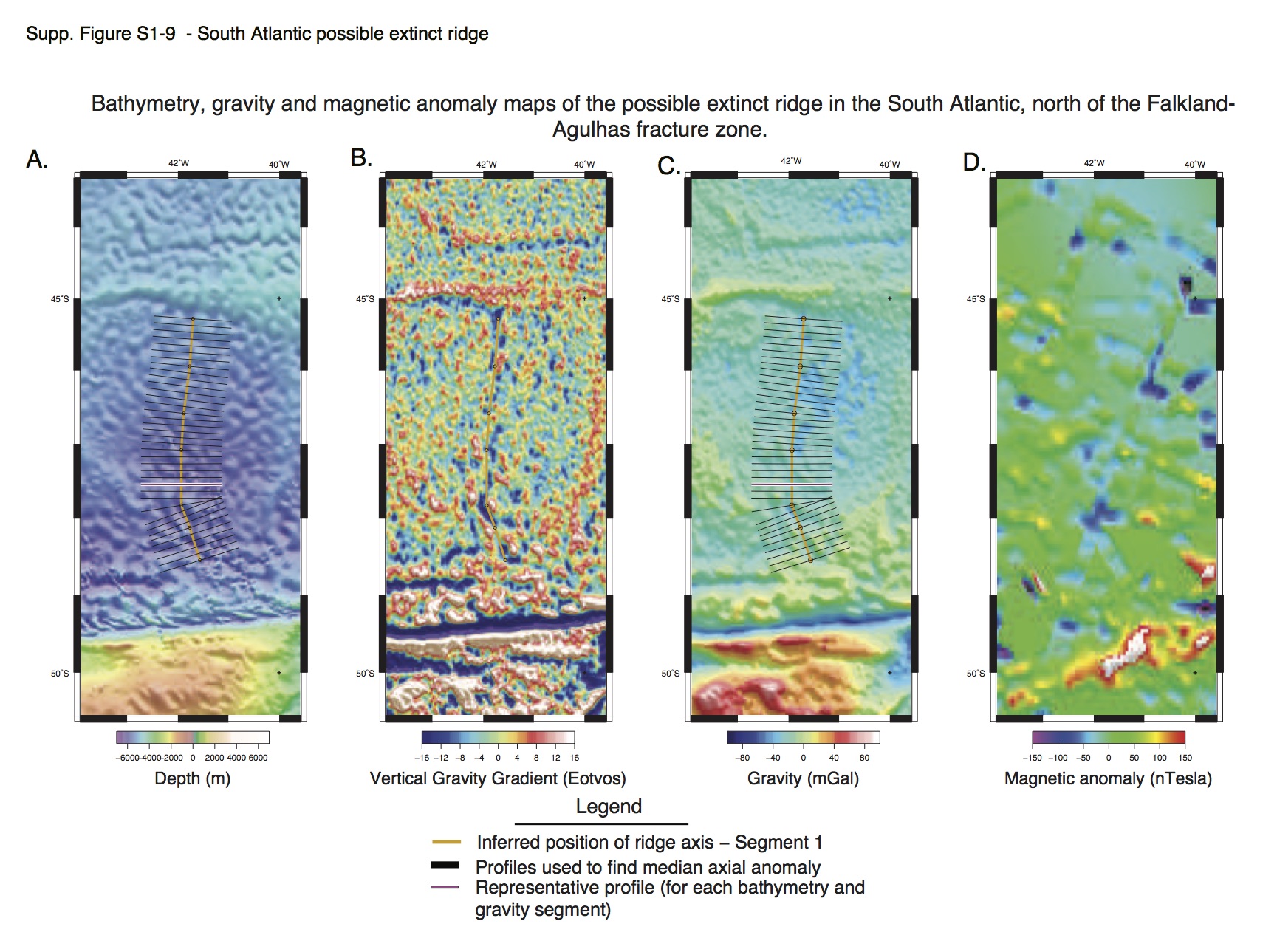| Ocean: | South Atlantic |
| Spreading center type: | Large-scale MOR or extinct microplate spreading center |
| Time of cessation: | Uncertain, probably late Cretaceous Quiet Zone, ca. 90Ma (no published studies) |
| Subsequent active spreading center: | Present-day MAR |
To our knowledge, no previous studies have suggested an extinct spreading center in the far southwest Atlantic. During a review of the updated Vertical gravity grid pf Sandwell et al. (2014), we observed a discontinuity in fracture zones between -40° and -43° W on the western margin of the South Atlantic, to the north of the Falkland-Aguhlas Fracture Zone (AGFZ). Within this region, a linear, N-S oriented low-magnitude negative gravity anomaly is seen, trending orthogonally to the fracture zones that are observed to the west, north and further east. It is tentatively suggested that an extinct spreading center is located within this crust and the present study tested this location in an attempt to confirm whether it could represent a past spreading center. The oceanic crust thought to have been formed at the extinct ridge is around 430 km across and the extent is around 560 km from north to south. The possible spreading center is likely to have been active prior to anomaly C34, during the later part of the Cretaceous Normal Superchron. If a constant spreading rate is assumed and all crust formed at the center is preserved on the South American margin, then the ridge may have started spreading at 88 Ma and continued until around 84 Ma, when the spreading axis appears to have migrated to the east, capturing a small area of the conjugate crust.
The bathymetric expression of this feature is minimal, although several profiles show a minor trough with relief of 200-300 metres. A low-gravity anomaly is observed, although this is of low-magnitude having peak to trough amplitude of around 10-15 mGals. The half-width of the gravity low is similar to that of well-defined axes and the form of the anomaly is broadly similar to an extinct-ridge signal.
MacLeod, S. J., Williams, S. E., Müller, R. D., Matthews, K. J. and Qin, Xiadong, 2017, A global review and digital database of extinct spreading centres, Geosphere (in press).
Sandwell, D., Müller, R. D., Smith, W. H. F., Garcia, E. S. and Francis, R., 2014, New global marine gravity model from CryoSat-2 and Jason-1 reveals buried tectonic structure. Science, v. 346, no. 6205, p. 65-67.


